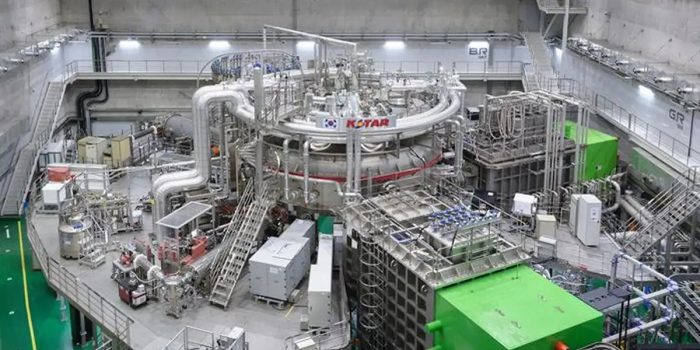Between the months of December 2023 and February 2024, significant advancements were made in the realm of fusion energy at the Korea Institute of Fusion Energy (KFE). Their Korea Superconducting Tokamak Advanced Research (KSTAR) fusion reactor accomplished a feat previously unattained.
It reached temperatures surpassing those of the Sun’s core by a factor of seven, maintaining an astonishing 212 million degrees Fahrenheit (100 million degrees Celsius) for a duration spanning 48 seconds. This momentous achievement establishes a new pinnacle for the fusion reactor endeavor. Additionally, KSTAR exhibited the ability to uphold the high confinement mode (H-mode) for over 100 seconds, signaling a state of stable plasma conducive to the facilitation of fusion reactions.

Fusion, replicating the energy generation process of stars, involves merging hydrogen and other light elements to produce vast energy potential, promising unlimited, carbon-free electricity—a goal often termed the ‘Holy Grail’ of the energy transition. Maintaining high-temperature, high-density plasmas for extended periods is crucial for effective fusion reactions, as highlighted by Korea’s National Research Council of Science & Technology (NST).
“In comparison with the previous divertors based on carbon, the new tungsten divertors showed only 25% increase in surface temperature under similar heat loads. This provides significant advantages for long-pulse high-heating power operations,” the NST explained.
Key to KSTAR’s recent successes are tungsten divertors, crucial components expelling waste gases and impurities from the reactor while enduring substantial heat loads. By switching from carbon to tungsten divertors, KSTAR achieved significant improvements, with only a 25% increase in surface temperature under similar heat loads. This upgrade has extended the duration of stable plasma conditions, attributed to tungsten’s high melting point.

The success of tungsten divertors holds immense value for the International Thermonuclear Experimental Reactor (ITER) project—a $21.5bn international fusion endeavor expected to achieve first plasma in 2025 and full commissioning by 2035. Tungsten divertors will be utilized in ITER, drawing upon the advancements made by KSTAR.
Suk Jae Yoo, President of the Korea Institute of Fusion Energy, heralds this achievement as a “green light” for securing core technologies necessary for future demonstration power plants, known as DEMO reactors. With this milestone, KSTAR aims to contribute vital insights for ITER and future fusion energy endeavors, paving the way towards sustainable, carbon-neutral energy solutions.


